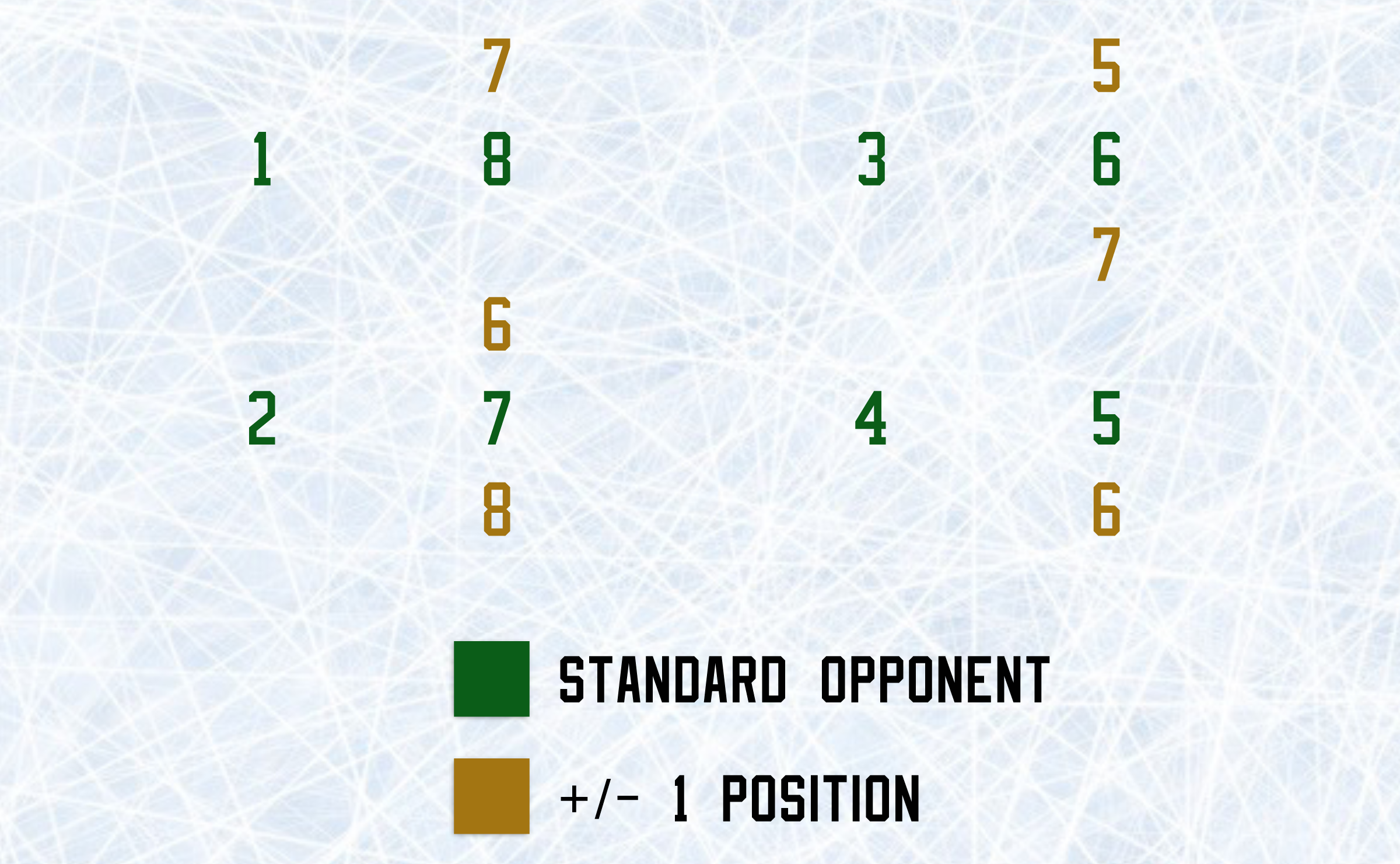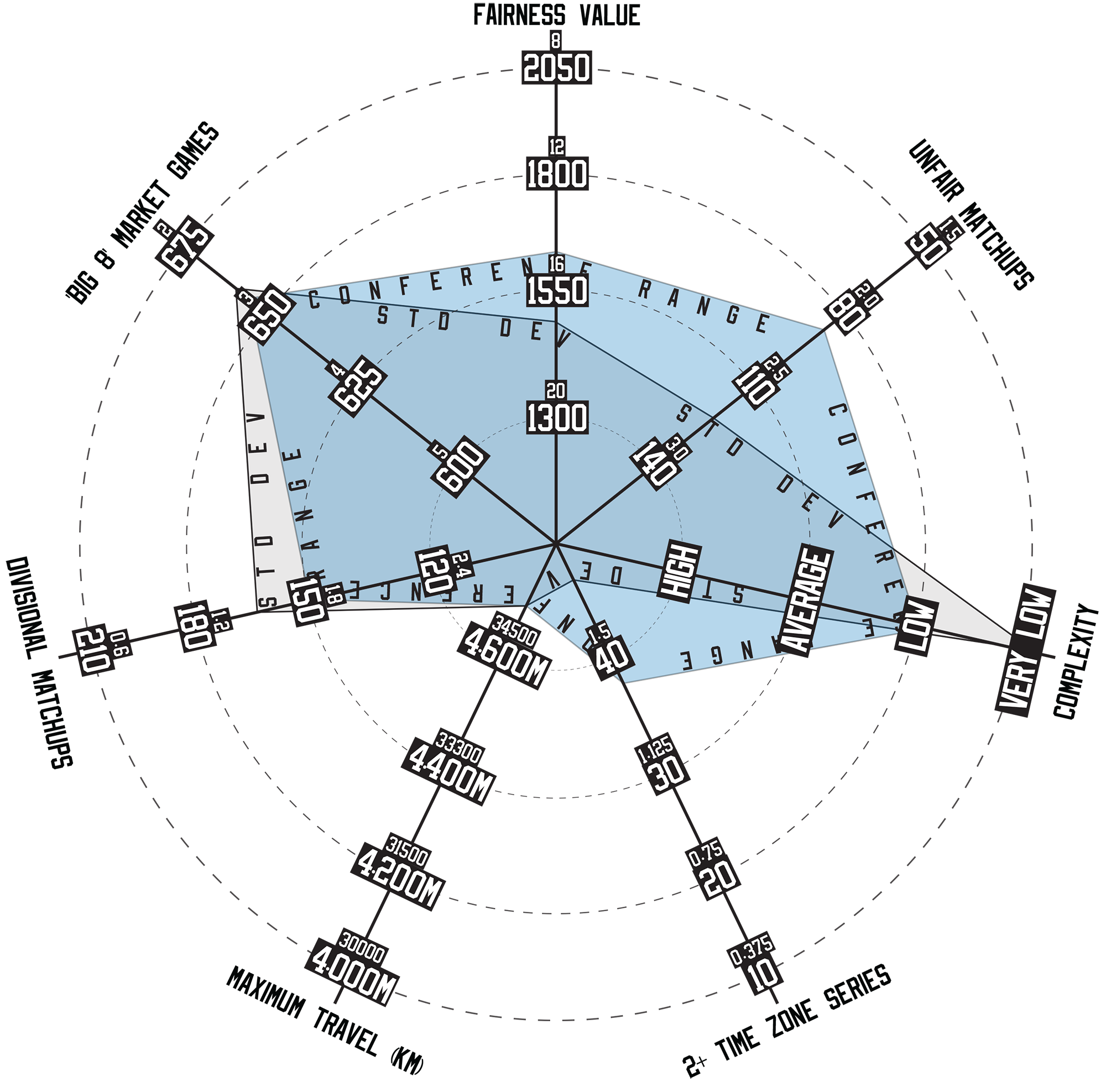Conference-Range Format
This format helps balance fan understanding of the format and fairness with prioritizing division rivalries. It modifies the Conference format so that each playoff seed can also draw an opponent that is one spot apart from their “standard” opponent (1/8, 2/7, 3/6, 4/5) in the Conference format (ex: #1 seed can draw #7 as well as #8, #3 can draw #7, 6 or 5, etc…)
Additionally, it changes the format with which placement in one’s Division is rewarded: while the Conference format used to do so by seeding Division winners ahead of all other teams, this format instead takes the approach of assigning the top 2 teams in the 2 Divisions per Conference to the top 4 seeds, in order of record. This accomplishes 3 main goals:
- Rewarding the top 2 teams, rather than just 1, in the Division with home ice advantage in the first round of the playoffs;
- Eliminating the possibility of the top 2 teams in the Conference meeting in the second round of the playoffs, since the #1 and #2 seeds can be from the same Division if they have the 2 best records; if it was only Division winners earning #1 and #2, then in the second round, the matchups could switch to #1 vs #3, and #2 vs #4/5/6, depending on which teams are from which Divisions, but the #3 seed could be the team with the second best record, coming from the same Division as #1;
- Balancing the problems that typically come with having a potential gap in Divisional strength.
When the #2/3 seeds in a Division are forced to meet in the first round of the playoffs, as is the case with the current Wild Card Divisional format and the Divisional format, a difference in the strength of the two Divisions in a Conference would result in two unfair matchups, but in this format, such a strength difference would definitely result in a weak 2nd -place-in-Division team with home ice advantage (#4 seed in Conference) thanks to finishing higher in the Division facing a strong 3rd-place-in-Division team from the other Division (#5 in Conference). If the matchup switches to #4/6 and #3/5, that would mean that the “weak” 2nd place team was actually no lower than 5th overall in the Conference, because #6 would have to be from the same Division for the swap to occur, which should not mean a significant strength difference between Divisions.
Here are some example of the format:
- Good balance between fairness, unfair matchups and Divisional matchups;
- Relative simplicity, banking on familiarity of fans with Conference format, likely leading to understanding in a short time;
- Appropriately rewards finishing higher in both Conference and Divisional standings, justifying using the current hybrid conference/divisional schedule format.
- Suffers from unusually high, very inconsistent time zone travel;
- Mediocre results overall compared to most other formats (caused by inadequate ability to measure the benefits of this format).
All logos © National Hockey League or respective owners, used for purpose of graphic aid only
Ice background © Artsfon wallpapers



